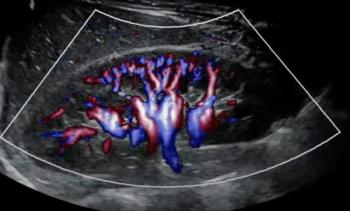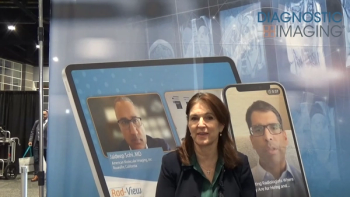Current Concepts with Advances in Photon-Counting Computed Tomography
Photon-counting computed tomography (PCCT) offers a number of salient advantages over conventional CT, including improved image resolution and contrast-to-noise ratio, enhanced denoising capability and inherent spectral sensitivity.
The technology of computed tomography (CT) has reached a point of maturity where further advancements seem limited by the intrinsic physical barriers of the method itself. While there are still margins for improvement at the software level, such as in automation and image processing, hardware challenges have become increasingly insurmountable.
These challenges include the rotation speed of CT systems, which cannot be further increased due to limitations in the photon flux needed to generate a quality image. Similarly, expanding the detectors would be counterproductive due to the artifacts they could introduce into the images. Lastly, further reduction of pixel sizes is hindered by the inefficiency in the radiation dose that would result.
Faced with these limitations, the need for a revolutionary approach was evident. Naeotom Alpha (Siemens Healthineers), the world's first CT system equipped with photon counting technology, redefines the concept of CT. This technology offers several advantages over traditional CT systems.
Photon counting detectors (PCDs) use a direct conversion technique. They consist of a semiconductor layer made of materials such as cadmium telluride, cadmium-zinc telluride, or silicon, with a large-area cathode electrode on the upper side and pixelated anode electrodes on the lower side. The application of high voltage, typically between 800 and 1000 V, between the cathode and individual anodes creates a strong electric field. When incident X-rays are absorbed within the semiconductor, charges are generated in the form of electron-hole pairs. These charges, under the influence of the electric field, separate and move toward the anodes. When the electrons reach the anodes, they produce short current pulses, which are converted into voltage pulses by an electronic pulse shaping circuit. Since the pulse height is proportional to the photon's energy, PCDs provide energy information for each detected photon through the output signal.
With these concepts in mind, let us delve into the four main benefits of photon-counting CT technology.
Enhanced Image Resolution and Noise Reduction
1. High-resolution imaging without dose penalty. Traditional CT systems face a trade-off between image resolution and radiation dose. Conventional energy-integrating detectors (EIDs) use a two-stage indirect conversion process. Initially, incident X-ray photons are transformed into visible light through a scintillator. Subsequently, this scintillation light is absorbed by a series of photodiodes and converted into electrical pulses. By integrating the energy of all X-ray photons over a specific time period, the detector loses the ability to retain the energy information of individual photons.
However, this is not a limiting factor for the spatial resolution of a detector. To avoid optical crosstalk, in EIDs, individual detector cells are divided by optically opaque layers called septa. However, these septa create inactive areas on the detector surface and, due to their limited thickness, affect the geometric dose efficiency.
It's important to note that PCDs operate differently. They do not deal with visible light but directly convert photons into electrical charges. As a result, they do not require septa. This design advantage allows PCDs to employ a higher pixel density without compromising the geometric dose efficiency of the detector.
2. Elimination of electronic noise in PCDs. In a PCD, the ability to measure the energy of each individual photon is crucial. Electronic noise typically resides in the spectrum below 25 keV. Given that the energy level of actual photons is above this threshold, PCDs can effectively distinguish between genuine photon signals and electronic noise. This distinction allows for the complete removal of electronic noise from the signal, ensuring a clearer and more accurate representation of the scanned object.
Taking Advantage of the Benefits of Spectral CT
3. Energy discrimination capability and spectral computed tomography. Spectral CT capitalizes on the intrinsic energy properties present in tomographic projections, allowing advanced delineation of tissue composition and promising innovations in the field of diagnostic imaging.
A cornerstone of spectral CT is material decomposition. By implementing high-level algorithms on a set of energy-selected projections, a complex of fundamental image maps is obtained. The cardinality of these bases directly corresponds to the volume of acquired spectral data. Each fundamental map illustrates the equivalent material density for each individual voxel. These offer a wide spectrum of representation options: they can be directly examined to highlight the distribution of specific compounds, such as contrast agents, or they can be further processed to produce virtual monochromatic images (VMIs), virtual non-contrast images (VNCs), or representations with material-specific chromatic overlays.
Standard CT, operating in two energy bands, can accurately discriminate an isolated contrast agent, such as iodine. However, it encounters obstacles in differentiating contrast compounds with high atomic numbers. In this context, PCDs emerge as essential tools. The capability of PCDs to discern photons based on different energies facilitates the concomitant acquisition of poly-energetic data with optimal spatiotemporal resolution. By increasing the number of energy bands in spectral CT, the accuracy in evaluating the energy of each photon is enhanced, culminating in optimized and material-specific representations.
Another benefit of adopting poly-energetic detections in spectral CT is the ability to quantify elements with K edges in the diagnostic energy domain. Through the acquisition of tomographic data at different energy levels, spectral CT can effectively assess the X-ray attenuation profiles of different compounds, capitalizing on their K-edge energies. This capability facilitates the identification and quantification of elements with distinct pharmacokinetics within the same biological system. This poly-energetic mode proposes the adoption of contrast agents alternative to iodine and stimulates the search for new contrast agents, such as nanoparticles directed toward specific cells or enzymes.
However, it is crucial to understand the distinction between spectral CT on PCD and spectral on conventional CT. Conventional or energy-integrating detectors are not able to measure the energy of individual incoming photons. Instead, they measure the accumulated energy of all incident photons, necessitating the use of other techniques to achieve spectral separation. These techniques include dual source spectral CT (running two tubes at different kV levels), kV switching, split beam acquisition, and dual-layer detectors. All these methods have limitations, affecting aspects like scan speed, image resolution, field of view, or dose efficiency.
In contrast, PCD CT systems inherently possess spectral sensitivity, ensuring they always measure the spectral aspects of the X-ray beam. This intrinsic capability means that additional functional information is always available. The potential to increase the accuracy of this data from two energy levels to multiple levels is inherent in the system design and represents a significant area of ongoing clinical research.
Raising the Bar on CNR
4. Improved contrast-to-noise ratio (CNR). Photon counting technology treats the contribution of each photon more uniformly, improving the CNR. With conventional CT, low-energy photons are inherently down-weighted in comparison to high-energy photons. This bias negatively impacts the CNR as these low energy photons can provide valuable information for image contrast.
By ensuring a more uniform treatment of all photons, regardless of their energy, photon counting technology offers a significant advantage in terms of image clarity and contrast differentiation. Incorporating these advantages, quantum iterative reconstruction (QIR) further refines the imaging process. Quantum iterative reconstruction employs statistical optimization of spectral data, ensuring precise artifact correction. Unlike traditional reconstruction methods, QIR uses adaptive iterative regularization, distinguishing genuine information from noise. This ensures that all spectra are treated consistently, leveraging the spatial and temporal coherence of spectral data acquisition.
Giuseppe Scappatura is a radiology technician at the UOC of Radiology of the Grand Metropolitan Hospital in Reggio Calabria, Italy. He is an integral member of both the Multidisciplinary CAR-T Therapy team and the Multidisciplinary Prostate Cancer team. He has played a pivotal role in coordinating diagnostic procedures related to COVID-19. The author can be reached via e-mail at: giuseppe.scappatura1970@gmail.com
Newsletter
Stay at the forefront of radiology with the Diagnostic Imaging newsletter, delivering the latest news, clinical insights, and imaging advancements for today’s radiologists.





























